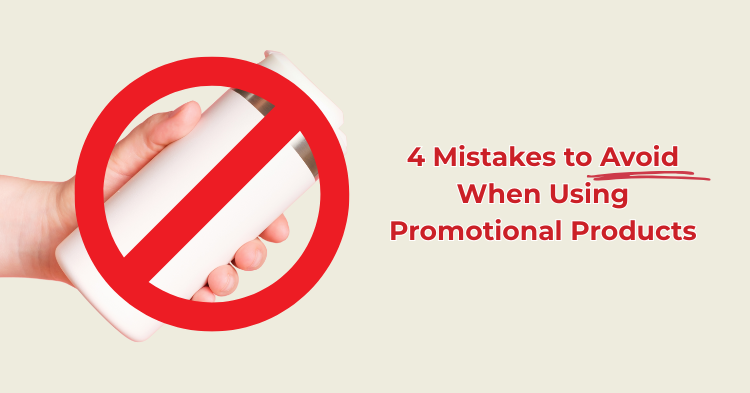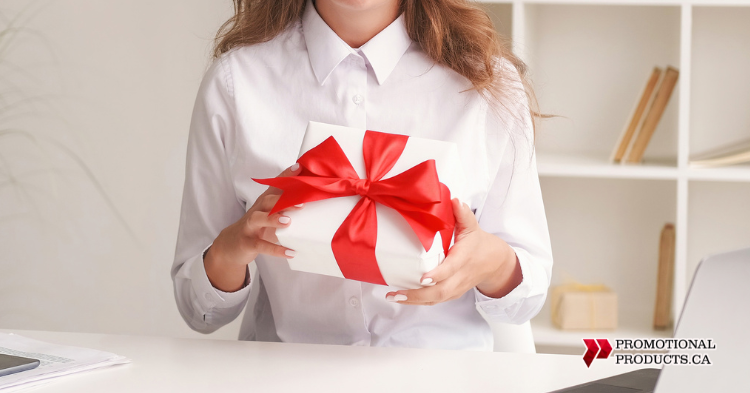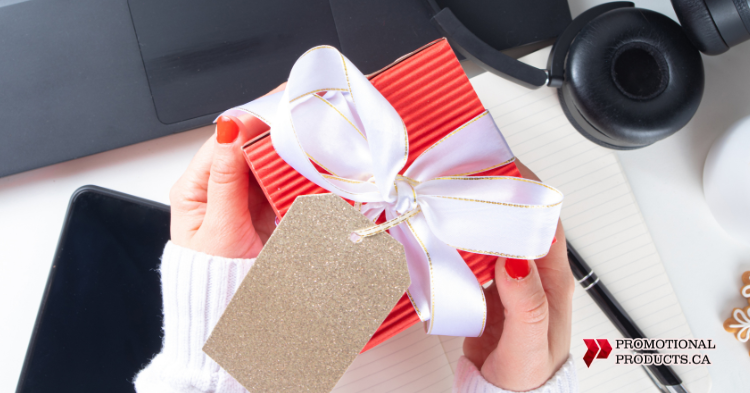Promotional products are a tried-and-true way to boost brand awareness, engage customers, and leave a lasting impression. Whether you’re handing out swag at a trade show, thanking loyal clients, or recognizing employees, well-executed branded merchandise can create real value for your business.
But too often, companies stumble in their approach — turning what could have been a memorable, effective marketing effort into wasted time and money.
To help you make the most of your investment, here are 4 mistakes to avoid when using promotional products, and practical advice on how to get it right every time.
Mistake #1: Choosing Products Without Considering the Audience or Context
One of the most frequent missteps is selecting a promotional product that doesn’t resonate with the audience — or worse, feels completely irrelevant to the event or situation.
For example, giving out beach towels at a winter trade show in Chicago may not connect. Or handing tech gadgets to an audience that isn’t tech-savvy can leave recipients confused and unengaged.
Why it hurts:
When a promotional product isn’t aligned with your recipients’ needs or interests, it’s likely to be tossed aside, forgotten, or never used. That defeats the purpose and can even create a negative association with your brand.
How to get it right:
- Start by defining your target audience clearly. Who will be receiving the item? What do they value?
- Think about the context of the event — is it formal, casual, outdoor, corporate?
- Choose items that are useful, appropriate, and appealing in that specific scenario.
- If possible, conduct a quick survey or talk to past event attendees to gauge what they’d find valuable.
An item that feels thoughtful and relevant is far more likely to be kept, used, and appreciated — keeping your brand top of mind in the process.
Mistake #2: Ordering Too Late
Another common pitfall is waiting until the last minute to order your promotional products. Businesses often underestimate how much lead time is required to produce, customize, and ship high-quality items — especially if you’re opting for something unique, personalized, or large in quantity.
Why it hurts:
Rushing often means you have to settle for lower-quality or generic items, pay expensive rush fees, or miss your delivery date entirely. You could end up showing up at an event empty-handed or with underwhelming merchandise that doesn’t reflect well on your brand.
How to get it right:
- Begin planning your promotional product strategy as soon as you know the event date — ideally several months in advance.
- Work closely with a trusted supplier to understand production timelines for your chosen items.
- Build in extra buffer time for unexpected delays, especially during peak seasons like spring and fall trade show circuits or the holidays.
- If you’re ordering internationally or using eco-friendly materials, anticipate even longer timelines.
By planning ahead, you’ll have access to a wider selection of products, better pricing, and the ability to correct any issues before it’s too late.
Mistake #3: Overbranding — Making Logos Too Large or Intrusive
It’s tempting to plaster your company’s name and logo across every inch of the item to ensure your brand is visible. But when branding is too loud, it can actually discourage people from using the product.
Nobody wants to carry a tote bag that looks like a walking billboard or wear a t-shirt with an oversized logo splashed across the chest — unless it’s a beloved brand or a very clever design.
Why it hurts:
Overbranding diminishes the perceived value of the product, making it feel cheap or overly promotional. If recipients feel self-conscious about being a walking advertisement, they’re less likely to use the item — which defeats your goal of increasing brand exposure.
How to get it right:
- Opt for tasteful, subtle branding that complements the design rather than overpowering it.
- Focus on quality and aesthetics first — think of the product as something you’d personally want to use.
- If space allows, incorporate branding elements in creative ways: an embossed logo, a discreet tag, or a design that integrates your colors and brand personality.
- Remember: when recipients actually use the item in public, your brand still gains visibility — without feeling intrusive.
A sleek, attractive product with understated branding can often generate more impressions and goodwill than a garish one that sits unused in a drawer.
Mistake #4: Underestimating Quantity
Running out of promotional products midway through an event or campaign is an embarrassing and costly mistake. Not only does it disappoint attendees, but it can also create negative feelings toward your brand. People remember how they felt — and being told “we’ve run out” isn’t a great impression to leave.
Why it hurts:
You miss out on potential leads, frustrate attendees who feel left out, and waste the opportunity to create positive engagement. Plus, underestimating quantity often means you can’t reorder quickly enough to replenish stock during the event.
How to get it right:
- Work with your event planner or sales team to estimate attendance as accurately as possible.
- Factor in a buffer for unexpected demand — it’s better to have a few extras than to run short.
- Consider tiering your giveaways: have a premium item for engaged prospects or VIPs and a more general, cost-effective item for everyone else.
- If you have leftovers, they can often be repurposed for future events, mailings, or employee appreciation programs.
Proper planning ensures that everyone who interacts with your brand has a consistent and positive experience — and that no one walks away empty-handed.

Final Thoughts
Promotional products can deliver incredible value when used thoughtfully — driving awareness, loyalty, and engagement in ways digital ads can’t always match. But without proper planning and strategy, it’s easy to make mistakes that cost you money and damage your brand’s image.
By avoiding these four common pitfalls — ignoring the audience, waiting too long to order, overbranding, and underestimating quantity — you can maximize the impact of your promotional products and ensure they leave the lasting impression you’re aiming for.
Focus on quality over quantity, relevance over convenience, and subtlety over excess, and your branded merchandise will not only be appreciated but remembered — keeping your brand in front of the right people long after the event ends.





